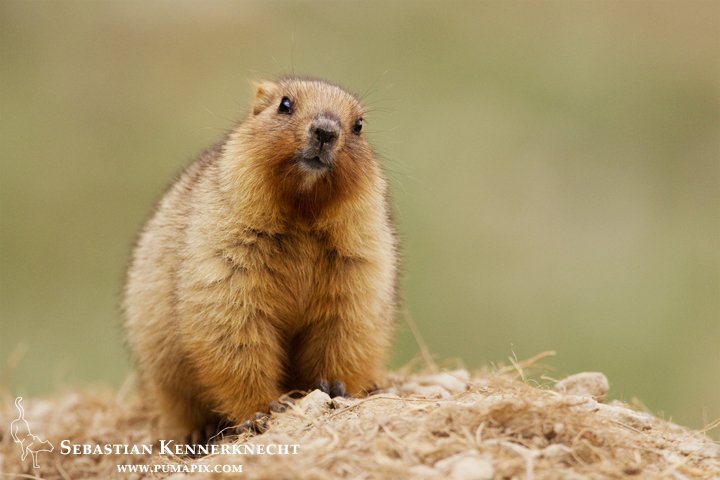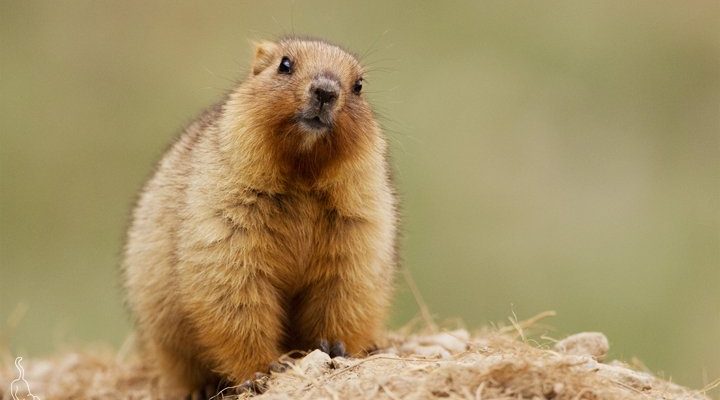
Honestly, marmots might seem like simple animals at first glance, but there’s so much more to them than meets the eye. They’re not just cute; they’re social, intelligent, and even have complex social structures. In this article, we’re diving into some cool facts about marmots that will make you appreciate them even more. Let’s uncover their world, one fun fact at a time!
Marmots Are Big Rodents
You might be surprised to learn that marmots belong to the squirrel family, but they’re much larger than your average squirrel. In fact, these furry fellows can weigh anywhere from 4 to 11 pounds and can reach about 20 to 30 inches in length! Just imagine seeing a chunky squirrel that’s been spending some serious time at the gym.
These hefty rodents come in various species, including the yellow-bellied marmot, the black-tailed prairie dog, and the Himalayan marmot. Each species has its unique habitat and characteristics, but they share common traits that make them easy to recognize.
Marmots typically have sturdy bodies covered with thick fur, which keeps them warm in their chilly mountain homes. They often have a distinctive coat pattern that includes grays, browns, and yellows, blending perfectly with the rocky terrain. You might find yourself spotting one while hiking through the mountains, where their presence adds a delightful touch of nature.
Social Creatures with Unique Behaviors
Marmots are incredibly social animals, living in colonies that can range from a few individuals to as many as 20. They create a supportive community where they can play, groom each other, and keep watch for predators. Think of it as a little alpine neighborhood, complete with chatter and camaraderie!
One of their fascinating behaviors is their use of vocalizations. Marmots communicate with a series of whistles, grunts, and chirps to alert their pals about potential dangers. If one marmot spots a hawk overhead, it lets out a high-pitched whistle that sends everyone scurrying back to safety. It’s like a schoolyard warning bell, but in the wild!
Their social structures are pretty complex too. Marmots often groom each other, which helps strengthen bonds within the group. You know how friends help each other out? Marmots do the same, working together to protect their colony and ensure everyone stays safe and happy.
Territory and Burrowing Habits
If you’ve ever seen a marmot in the wild, you probably noticed its *burrow*. Marmots are expert diggers, creating extensive tunnels that serve as their homes. These burrows can be quite elaborate, complete with chambers for sleeping, storing food, and even having lil’ marmot parties.
A single burrow can stretch several feet deep and can even go horizontally for a good distance. Not only do these burrows provide shelter from predators, but they also keep marmots warm during the cold months and cool in the summer heat. Imagine having your own little underground fortress to escape to!
When it comes to territory, marmots are pretty particular. They will defend their burrows and surrounding area from other marmots. It’s like having a “No Marmot Zone” marked in their territory. This behavior helps maintain peace within their colonies, ensuring that everyone has enough space and resources.
What Do Marmots Eat?
Marmots are herbivores, meaning they primarily eat plants. Their diet consists of a variety of grasses, flowers, and herbs, making them a crucial part of the alpine ecosystem. They prefer munching on fresh, green plants during the warmer months, really enjoying the bounty of summer.
In preparation for the colder winter months, these critters are known to binge-eat, storing up fat reserves and gathering food. They’ll fill their burrows with dried grasses and other plant matter to ensure they have enough to munch on when the snow covers the ground. It’s like a hoarding strategy, but, you know, in a cute, furry way.
Here’s the thing: marmots have to be cautious about their eating habits. They need to fill up on food without drawing too much attention from predators. You might be wondering how they manage to do this—well, they’re experts at sneaking in quick snacks while keeping an eye out for hawks and other threats.
Hibernation: Sleeping Through Winter
Marmots are unique in that they hibernate during the winter months. As the temperatures drop and food becomes scarce, they retreat to their cozy burrows to sleep for months at a time. This process usually starts in late September and can last until late March or even early April.
During hibernation, a marmot’s heart rate and metabolism slow down significantly, allowing it to conserve energy. They’ll survive off the fat they stored up during the warmer months, which is pretty impressive when you think about it. It’s like taking a really long nap to recharge for the next busy season!
You may wonder how they wake up. As spring approaches, the warmth from the sun prompts them to shake off their slumber. Slowly but surely, they emerge from their burrows, ready to explore the world again and find food. Their emergence is like a mini event in the animal kingdom, signaling the arrival of spring for many other creatures as well.
Marmots and Their Predators
Life in the wild can be tough for marmots, especially with predators lurking around. Some of their biggest threats include eagles, coyotes, and even humans. With their fluffy bodies and playful nature, marmots can be pretty vulnerable, so they’ve developed a few strategies to stay safe.
To protect themselves, marmots rely heavily on vigilance and teamwork. They often take turns acting as lookout while the others eat or play. When a predator is spotted, the lookout will sound an alarm, and the entire group will dash for safety. It’s teamwork at its finest!
Interestingly, marmots can also be quite aggressive when it comes to defending their territory. They’ll puff up and hiss at intruders, creating a loud ruckus to scare off anyone trying to invade their space. So, if you thought they were all about sunshine and cuddles, there’s a fierce side to these cute critters.
Why Marmots Matter for the Ecosystem
Marmots play a significant role in the ecosystems they inhabit. By munching on plants, they help control vegetation growth and promote a healthy environment. Their burrowing habits also aerate the soil, which aids in plant growth and nutrient distribution.
Their presence is vital for various other species as well. Many animals, such as birds of prey, rely on marmots as a food source. Plus, when marmots dig their burrows, they create homes for smaller animals like insects, frogs, and other critters. So, in a way, these little mammals are like secret gardeners and engineers of their mountainous homes.
As stewards of the environment, marmots remind us of the importance of maintaining a healthy ecosystem. Protecting their habitats means protecting countless other species that share their home, preserving the beauty and balance of our natural world.
Fun Facts and Closing Thoughts
We’ve covered quite a bit about marmots, but let’s wrap up with a few fun tidbits. Did you know that marmots can communicate with over 10 different vocalizations? Or that they have been known to live up to 15 years in the wild? Their unique personalities and social structures make them endlessly fascinating.
Whether you’re hiking through the mountains or just curious about wildlife, take a moment to appreciate the marmots. These furry friends might be small, but they have a huge impact on their environment and the ecosystems around them. So next time you spot a marmot basking in the sun, remember all the hard work and charm packed into that fluffy little body!

